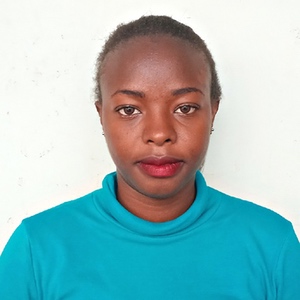It was a bright Wednesday morning when I visited Kimangeti Girls' Secondary. First, I signed the book at the security office close to the gate and was then taken to the school administration block. There, I found the headteacher at her office and she welcomed me warmly. I introduced myself and then she took me around the school so that I could see the need for myself.
The school officially opened in 2013 with 21 girls. By the end of 2013, enrollment had grown to 79 girls. The girls study English, Kiswahili, mathematics, chemistry, biology, physics, history, geography, religion, business studies, and agriculture.
The 170 girls who stay in the dormitories wake up very early in the morning - as early as 4 am. They are asked to attend a morning study hall from 4:40 am to 6 am, then go for breakfast at 6 am as the 110 day students arrive to help do cleaning chores. Classes go until 4 pm. Day students return home while the boarders get cleaned up for dinner.
Early on, the school board recognized the need to have water, especially for the girls who live on campus. They hired workers to come to dig a well which they covered with a hatch. The girls open the hatch to lower a bucket and rope to pull up water. All this work for water that isn't even safe from contamination. Students drink this water and complain of stomachaches; they wash with it and suffer from rashes. The well isn't even reliable because when it hasn't rained for several days, the girls need to find an alternative. The school board also purchased a 2,300-liter plastic tank to help cut back on the arduous task of lowering and raising a bucket for water, but the rainwater in this tank does not last long.
They walk to the nearby boys' school to access water from a well that does not go dry. The boys' well is overcrowded and the girls spend a lot of extra time between walking there, waiting in line, and fetching the water.
What we can do:
"The school really needs the facilities. As you can see and testify, the school has minimal sanitation facilities to be used by the students of which they really get a hard time to get water for using in school, especially the boarders," said Teacher Sham.
VIP Latrines
We will construct two triple-door latrines with local materials that the school will help gather. Three doors will serve the girls while the other three serve the boys. And with a new source of water on school grounds, students and staff should have enough to keep these new latrines clean.
Rainwater Catchment Tank
A 50,000-liter rainwater catchment tank will help alleviate the water crisis at this school. The school will also help gather the needed materials such as sand, rocks, and water for mixing cement. Once finished, this tank can begin catching rainfall that will be used by the school’s students and staff. Students will no longer spend their time on the arduous task of lifting a heavy container out of the open well, nor will they have to walk to use water from the neighboring school's well. They will have both a source of water and a place to store and treat it.
We and the school strongly believe that with this assistance, standards will significantly improve. These higher standards will translate to better academic performance!
Training
We will hold training on good hygiene habits for two days. The facilitator will use PHAST (participatory hygiene and sanitation transformation), ABCD (asset-based community development), CTC (child to child), lectures, group discussions, and handouts to teach health topics and ways to promote good practices within the school. The CTC method will prepare students to lead other students into healthy habits, as well as kickstart a CTC club for the school.
Handwashing Stations
There is currently only a handwashing station for teachers.
We will deliver two new handwashing students to be used by the students. The CTC club will oversee the new facilities, such as handwashing stations, and make sure they are kept clean and in working condition. The club will fill them with water on a daily basis and make sure there is always a cleaning agent such as soap or ash.



 Rehabilitation Project
Rehabilitation Project


































